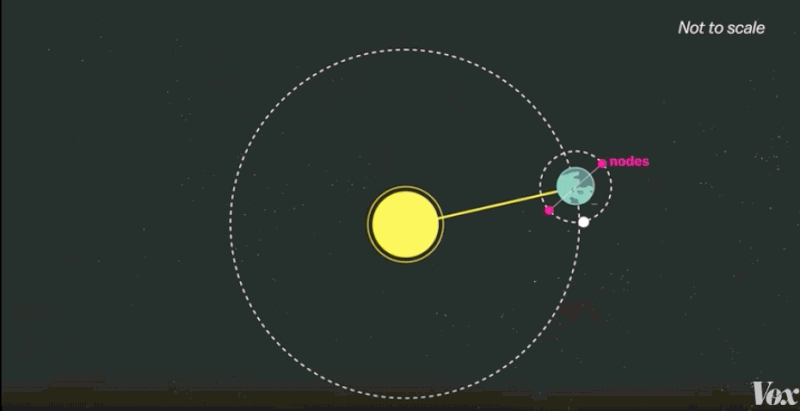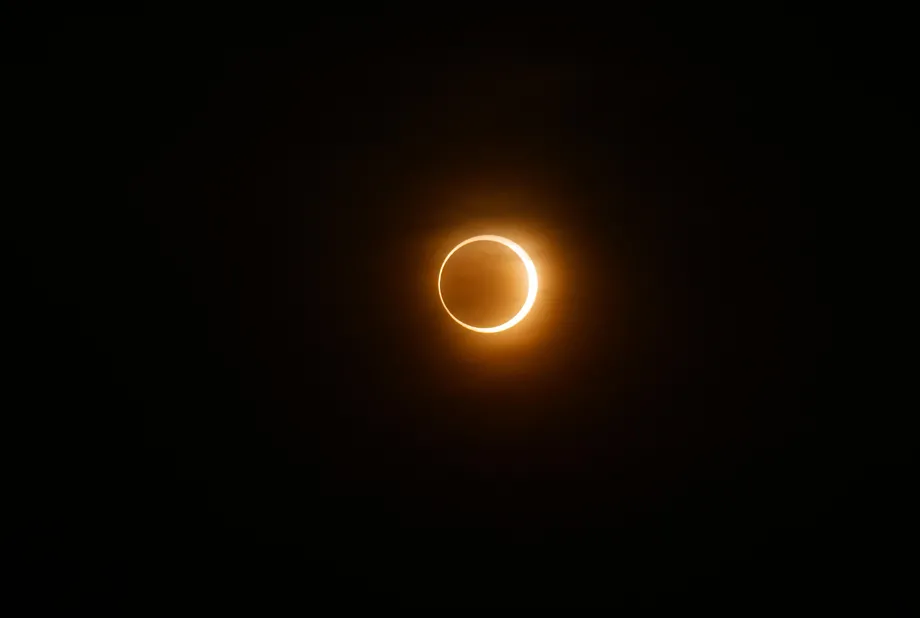
On Saturday, October 14, the moon will pass directly between the Earth and the sun, casting its shadow across the Earth’s surface.
Those in the path of the shadow, mainly in the Western United States, Mexico, and Central and South America, will be able to look up and see a spectacular event: an annular “ring of fire” solar eclipse.
This weekend’s path notably passes through the Navajo Nation and lands of other Indigenous people in the Four Corners region where these celestial events have particular cultural significance. Citizens of the Navajo Nation, the Diné people, avoid going outside, looking at the eclipse, or allowing the light of the eclipse to shine on them. Some tribal lands, including all Navajo Tribal Parks and the iconic Monument Valley, will be closed to visitors on Saturday to respect cultural traditions.
In contrast to a total solar eclipse, where the moon completely obscures the sun, an annular eclipse allows some light to sneak around the moon’s edges. This occurs because annular eclipses happen when the moon is slightly farther from the Earth in its orbit. This increased distance causes the moon to appear slightly smaller than the sun, resulting in a brilliant halo encircling it.

Hence, the term “ring of fire” is derived from this phenomenon. These eclipses exhibit this distinctive appearance. Isn’t it fascinating? (However, it’s crucial not to gaze directly at it, as explained below.) Such occurrences are somewhat infrequent. In the course of this decade, only 12 more annular eclipses will take place, scattered across the world.
In the United States, weather permitting, the eclipse will be visible from parts of Oregon, California, Idaho, Nevada, Utah, New Mexico, Texas, Colorado, and Arizona, according to NASA.
The eclipse will begin in Oregon at 9:13 am Pacific Time and conclude in Texas at 12:03 pm Central Time before moving south into Mexico, Belize, Honduras, Nicaragua, and eventually extending to Brazil.
To find out when the eclipse will pass over your specific region in the US, please refer to the map below. Only individuals within the shaded band on the map will have the opportunity to witness the complete “ring of fire” effect.
Alternatively, you can visit NASA’s eclipse website, which offers a user-friendly interactive feature. By navigating to their webpage, you can click on any point within the eclipse path to obtain precise starting and ending times for the celestial event in your specific location.
For those unable to be present along the eclipse path, NASA will offer a live broadcast of the event, which you can watch below.
If you’ve read this far and are still wondering about the “Why and how do solar eclipses happen?” or “When will the next one be?” or “How can I safely view this without risking my eyesight?”, we’ve got you covered:
Why do we have solar eclipses?

the moon at times passes between the Earth and the sun, causing the sun to be obscured. However, the actual mechanisms involved are more intricate. Three specific cosmic conditions must align to create the shadow and produce a solar eclipse.
1) There has to be a new moon
The moon is consistently illuminated on one side by the sun, but this illuminated side is not always visible from Earth. This phenomenon gives rise to the various phases of the moon. To facilitate a solar eclipse, the moon must be in its “new moon” phase, during which the dark side of the moon directly faces the Earth.
2) The moon has to cross the plane of Earth’s orbit
Solar eclipses don’t happen during every new moon because the moon’s orbit isn’t perfectly aligned with the Earth’s. This discrepancy is due to the moon’s 5-degree tilt on its axis, although the exact reason for this tilt remains uncertain – it might be related to the moon’s formation, possibly resulting from a massive object colliding with the Earth.
As a consequence of this tilt, the moon’s shadow usually misses the Earth during most new moons. However, there are two specific points in the moon’s orbit where its shadow can intersect with the Earth, and these are referred to as nodes. To experience a total eclipse, the moon must be situated at or very close to one of these nodes.

3) The moon’s distance to the Earth
As you may recall from middle school science, the moon’s orbit around the Earth isn’t a perfect circle; it’s actually an ellipse. Within this elliptical orbit, there’s a point where the moon is at its greatest distance from the sun and another point where it’s at its closest.
To have a total eclipse, the moon must be positioned near its closest approach to Earth. When an eclipse occurs while the moon is in proximity, it completely obscures the sun. However, if the moon is farther away in its orbit, it results in the captivating “ring of fire” effect.
If you’re going to observe the eclipse, be careful!
Looking directly at the sun on a typical day can be harmful to your eyes, and the same holds true for an eclipsed sun. NASA strongly advises, “It is never safe to look directly at the sun’s rays.” The sun’s intense light can damage your retina and result in a permanent blind spot in your central vision, as reported in the Lancet.
Even during a partial or annular eclipse, the light’s intensity can still lead to retinal damage. NASA explains that “even when 99 percent of the Sun’s surface (the photosphere) is obscured during the partial phases of a solar eclipse, the remaining crescent Sun is still intense enough to cause a retinal burn, even though illumination levels are comparable to twilight. “
To safely observe an eclipse, it’s essential to do so indirectly, such as by projecting the eclipse onto a screen using a pinhole or by looking through a specially designed filter.
If you miss this eclipse, there’s another one coming in 2024
If the weather doesn’t cooperate tomorrow (since eclipses can’t be observed through clouds) or if you can’t make it to the eclipse’s path, there’s still hope. Another eclipse is on the horizon for the US in 2024, and it’s a total eclipse, where the moon completely obscures the sun, offering a truly breathtaking spectacle. During total solar eclipses, you can witness the sun’s ethereal corona, its outer atmosphere, with the naked eye.
This event is set to take place on April 8, 2024, and will traverse a significant portion of the Eastern United States. Be sure to mark your calendars for this exciting celestial event.
